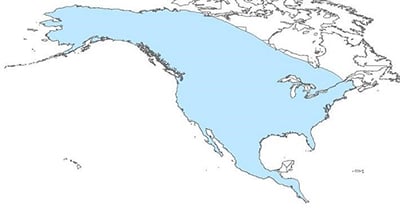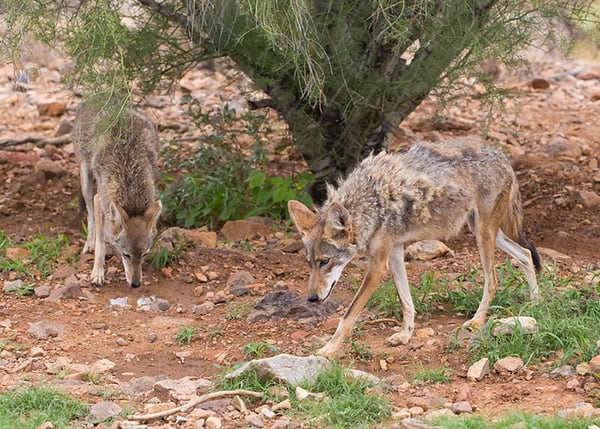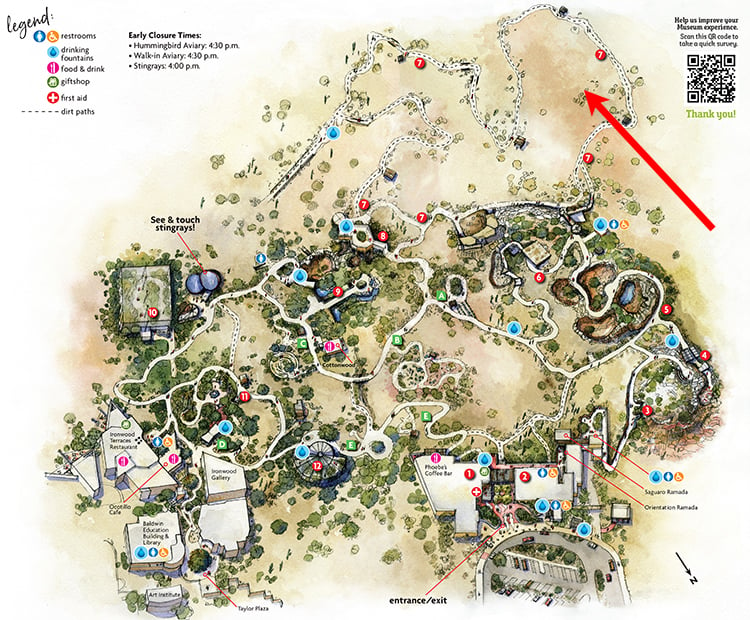Coyote

About
This is a canine that loves to sing—they make at least 11 different types of vocalizations! Their nickname “song dog” makes a lot of sense, and their Latin name Canis latrans means “barking dog.” Coyotes have a lot of personality. Sometimes they seem naughty, and sometimes nice. In Indigenous stories, they’re sometimes a notorious trickster and sometimes appear wise. Coyotes are often mistaken for small or medium sized domestic dogs, so look twice and keep your distance to admire them from afar.
Hear coyotes sounds.
Adaptations
These smart, wild dogs are famous for being adaptable when it comes to where they live and what they eat. The coyote can be both independent and a great team player, and they adjust their hunting style based on what foods are available. When they hunt small animals alone, they usually stalk in and then pounce. If the prey is larger, like a deer, they will often hunt in small packs and work together for the kill.
Food Web
Coyotes are opportunistic omnivores, which means they will take advantage of any opportunity to eat, or try to eat, just about anything (plant or animal). In the Sonoran Desert, coyotes vary their diet with the seasons. Some of their favorite foods include cactus fruits, mesquite beans, flowers, insects, rodents, lizards, rabbits, birds, and snakes. As a top predator, coyotes play an important role in maintaining balance in an ecosystem’s food web.

Habitat and Range
Coyotes are found throughout North America, from Alaska and Canada through the U.S. and Mexico. These adaptable critters live in a variety of habitats. In the Sonoran Desert, coyotes can be found in desert scrub, grasslands, and foothills — as well as in neighborhoods and even big cities!

Family Life
Coyotes have a central den site which is used for rearing pups and sleeping. They will scent mark the area around the den and defend it from other coyotes. The den can be a burrow dug into the ground or under a rock outcropping, tree, or bush. If the area gets disturbed the mother will often move the pups to a safer location.
Glossary
- Rearing:
- raising and caring for young.
- Altruism:
- an animal behavior that benefits another, often at its own expense.
Fun Facts
- In the wild, coyotes live between 10-14 years. In a zoological setting, they can live as many as 20 years.
- Altruism has been observed in coyotes when they bring food to other trapped or injured coyotes.
- Coyotes, magpies, and crows will sometimes follow each other to find food. They don’t seem to fear or attack each other, but rather work together to get a good meal!
- Coyotes and badgers have long been known as hunting partners. There is even evidence that they can be playful and travel together through wildlife tunnels for extra safety! Watch them play on YouTube!
Conservation
Currently coyote populations are stable. They are not listed as threatened or endangered.
At The Museum
View on Map

Visit our Museum coyotes at the Desert Loop Trail! The exhibit is open year-round; the trail is rough terrain, but wheelchair accessible.